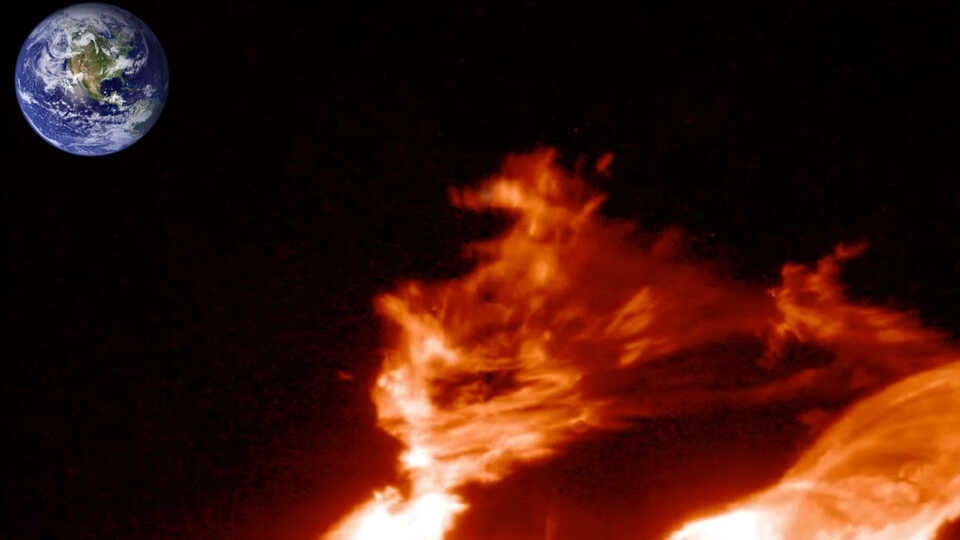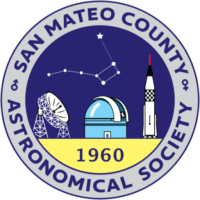Presentation on September 5, 8:00pm PST
in the CSM Planetarium
Speaker: Dr. Bart De Pontieu, Solar Physicist
Solar and Astrophysics Laboratory
Lockheed Martin Advanced Technology Center
Unraveling the Mysteries of the Sun’s Atmosphere
Free and open to the public. Free Parking in nearby lots.

The Sun, our nearest star, is more than just a blazing ball of fire. Its atmosphere, hotter than its already scorching surface, presents a puzzle that has intrigued scientists for years. How does the Sun’s magnetic field drive the heating of its 10,000-degree chromosphere and million-degree corona? This enigma holds significant implications for Earth, as the Sun’s corona hosts powerful explosions and eruptions that can trigger space weather events affecting our technology-dependent society. From mesmerizing auroras to disruptions in communication systems and satellite operations, the Sun’s activity touches our daily lives in unexpected ways.
In this talk, I will delve into the recent strides made in understanding the Sun’s atmospheric dynamics. Thanks to breakthrough observations from space-based telescopes like NASA’s IRIS and SDO, coupled with advancements in supercomputing, we are gaining deeper insights into the mechanisms driving solar heating. Moreover, I will explore the upcoming frontier in solar research, with future observatories like MUSE poised to revolutionize our understanding of the Sun’s behavior and its impact on our planet and beyond.
Note, a special treat for the audience: This presentation will include video clips which make use of the Planetarium’s full-dome projection system!
We propose a mission concept for a space observatory with a large-aperture (50-meter) unsegmented primary mirror suitable for a variety of astronomical applications. The mirror would be created in space via a novel approach based on fluidic shaping in microgravity, which has already been successfully demonstrated in a laboratory neutral buoyancy environment, in parabolic microgravity flights, and aboard the International Space Station (ISS). Theoretically scale-invariant, this technique has produced optical components with superb, sub-nanometer (RMS) surface quality.

Bart De Pontieu is a solar physicist whose research focuses on using high-resolution observations and numerical simulations to understand the physical processes that cause the rapid rise of temperatures from 10,000 degrees to millions of degrees in the low solar atmosphere. He is a Fellow at Lockheed Martin’s Solar & Astrophysics Laboratory which is part of Lockheed Martin Advanced Technology Center (LM ATC) in Palo Alto, California. Dr. De Pontieu is the principal investigator for NASA’s Interface Region Imaging Spectrograph (IRIS), a solar-observing small explorer satellite mission built by LM ATC which has been observing the Sun’s atmosphere since its launch in 2013. He is also the principal investigator of the new MUlti-slit Solar Explorer (MUSE) mission, a solar-observing medium class explorer satellite mission to be launched in a few years.
Dr. De Pontieu started his career in astrophysics as a teenage amateur astronomer in Belgium, with a passion for observing meteors and artificial satellites. He studied physics engineering at the University of Ghent, Belgium, and got his PhD in astrophysics at the University of Ghent and Max Planck Institute for extraterrestrial physics in Garching, Germany. After a postdoc at Stanford University, he has been at Lockheed Martin since 1999 where he has worked on many solar physics satellite missions, including TRACE, Hinode, Solar Dynamics Observatory, IRIS, MUSE, and Solar-C. He is also an adjunct professor at the Institute of Theoretical Astrophysics at the University of Oslo.
